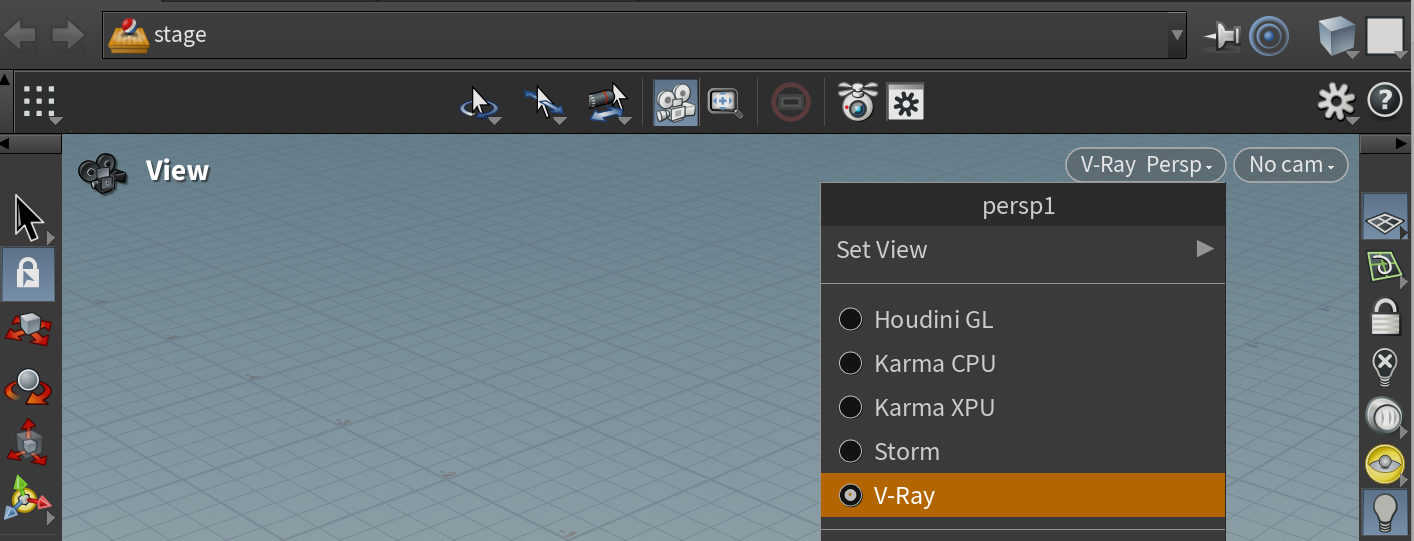What is Hydra?
Hydra is a high-performance rendering engine developed by Pixar as part of their Universal Scene Description (USD) framework. Hydra's primary role is to provide a real-time, interactive rendering viewport for the USD framework.
The V-Ray Hydra delegate can be used both in Solaris for Viewport IPR rendering, and through the standalone Husk executable shipped with Houdini, for production rendering.
What is a Hydra scene delegate?
Hydra scene delegate is a bridge between the scene graph (USD scene) and the Hydra rendering engine. The scene delegate is responsible for translating the scene description (e.g. geometry, shaders, lights, camera views, etc) into a format that Hydra can understand and render.
What is Hydra render delegate?
A render delegate parses the scene data provided by the Hydra API to do the actual rendering. Chaos provides a Hydra render delegate called V-Ray.
Where can I find the V-Ray Hydra delegate?
V-Ray Hydra delegate appears in Houdini’s viewport options menu.
You can also use the V-Ray Hydra delegate for production rendering through Husk. Husk is found under the Houdini installation folder/bin/husk.exe
To use V-Ray, you should call the following in a terminal: husk.exе -R HdVRayRendererPlugin
Is Husk based on Hydra and is it executing it under the hood?
Husk renders a USD file using a Hydra client, such as Karma or V-Ray. The Husk renderer is a standalone tool included in Houdini that can be used for batch rendering with any Hydra delegate (e.g. V-Ray).
Does the render delegate refer to both the Hydra (viewport) and Husk?
Hydra is an open-source framework to transport live scene graph data to renderers. It is used to transport the scene data to a batch render instead of the Solaris viewport with husk.
What is USD?
USD or Universal Scene Description (.usd) is a framework and file format, developed by Pixar, that allows 3D scenes and assets to be transferred and edited on multiple applications. USD focuses on workflows that allow multiple users to collaborate on a project without conflict by using non-destructive editing, asset versioning and variations. Read more about USD here.
What USD file formats are supported?
USD includes a human-readable ASCII file format (usda) and a binary file format (usdc), also known as Crate. It also includes support for reading and writing Alembic files.
Do I need to install additional plugins to render with V-Ray in Solaris?
No, you don’t need to install additional plugins or builds beyond the standard V-Ray executable build.
Which features are supported in Solaris?
A full list of all supported features for rendering in Solaris with V-Ray can be found on the Solaris Features and Limitations page.
Can V-Ray render MaterialX materials?
Yes, V-Ray render delegate can render MaterialX (mtlx) materials. The full list of all supported mtlx nodes can be found on the MaterialX Support page. Read more about MaterialX here.
Should I adopt an exclusively Solaris workflow, or does V-Ray support importing scene data from SOPs (e.g. through the Scene Import LOP)?
Ideally, you'd build your scene in the /stage context rather than relying on the 'vanilla' Houdini workflow and importing in /stage through the Scene Import LOP. While this is partially supported, there are edge cases where the Scene Import will fail to parse the material assignments for V-Ray shaders.
Can V-Ray perform distributed rendering in Solaris?
Yes.
Can V-Ray resume rendering after stopping?
Yes.
Can I override materials in Solaris and how?
Yes, you can override any V-Ray material through the spreadsheet with a right-click. You can also override other materials, except for the V-Ray ones, through the Edit Material Network LOP node in /stage.
Can I promote V-Ray material parameters in Solaris?
Yes.
Can I use multi-render workflows with V-Ray in Solaris?
Yes, you can. For example, if you want to render materials specific for different renderers, e.g. V-Ray materials and Karma materials, you need to plug the materials into a Collect VOP node.
Why can’t I see my V-Ray Proxy after import in Solaris?
V-Ray Proxy cannot be previewed in Solaris viewport and is seen only during render time.
After instancing a light using the class prim system, the light from the class itself is still emitting when it shouldn't. How can I turn it off?
Disable the light by turning off the Enabled parameter. The instancer then will enable the instanced lights. Note that this behavior will be fixed in the future.
